Last Updated on June 20, 2024 by Michelle
So, I’m still learning how to make maple syrup. I’m still messing up almost daily. But wow, I’m not sure that I’ve ever enjoyed such amazingly delicious, oh-so-sweet byproducts of my failures.
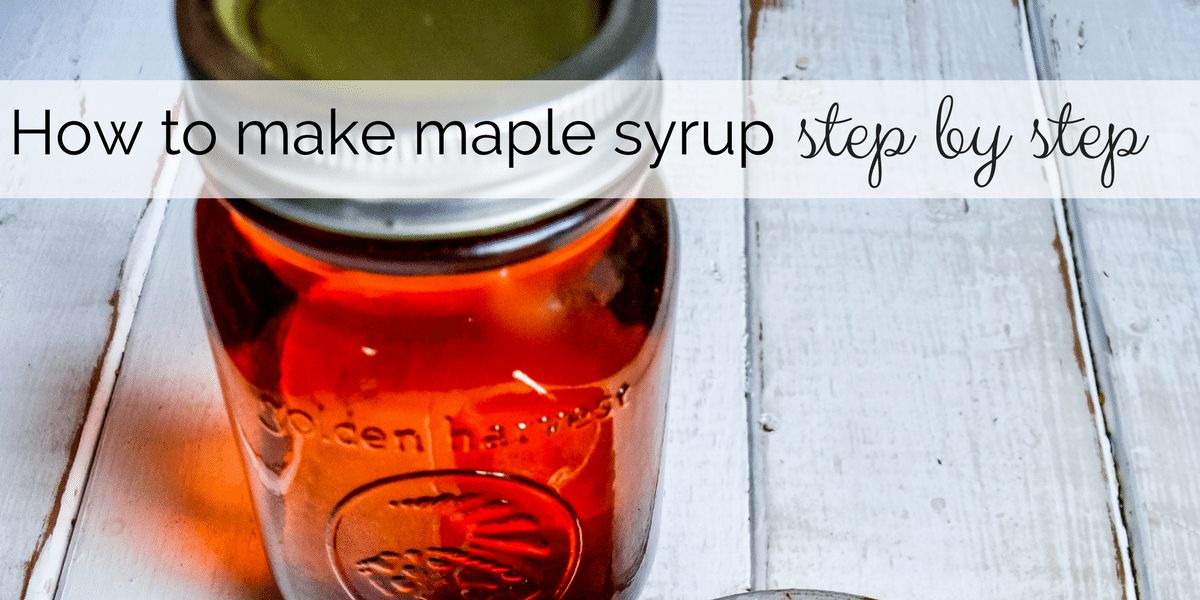
Before we dive into this together, I wanted to ask if you’d please consider helping me support sugarmaking education worldwide with every purchase of the SoulyRested Swag. You’ll find the latest designs right here (like the one I’m wearing here) .
Two years’ worth of failures have actually taught me a lot about backyard maple syrup making. (Heck, I’ve been homeschooling my daughters for 16 years, and I’m still learning from my failures in that endeavor as well.) So far in this series, we’ve reviewed how to mark your trees that you want to tap and start gathering supplies, how to drill your taps, if you live where you can tap for sap, 7 questions you should know the answer to before you tap your trees, and how to save hundreds with your backyard syrup making. Today, I’m gonna walk you through the process my daughters and husband and I go through daily to make maple syrup. Step-by-step.
Oh, and I’m gonna drop a recipe for making your own homemade electrolyte-filled maple drink over in my resource library. Just scroll to the end of this post and sign up for my weekly-ish newsletter. I will immediately send you access to my full resource library, including a recipe for an amazing nutrient-rich maple drink.
Or you might be interested to know that scientific big wigs who get into such crazy ideas have actually figured out just how much really-good-for-you-stuff occurs naturally in syrup. You can read their detailed fancy-shmancy article here, or take my word for it that this amazing liquid is LOADED with antioxidants. But of course it is; it’s all-natural, totally real food.
So now that you know WHY you should wanna make and eat this deliciousness, I’m gonna walk you through the steps of HOW to make maple syrup. If you’re not ready to go out and tap some trees quite yet, that’s okay, just pin this for later.
If, on the other hand, you want to make syrup but don’t have a grove of sugar maples, check out this list I’ve put together, after many years of research, of 31 trees that can be used for sugarmaking.
Take a Second to Save These Posts for Later
I know I come across helpful pointers online all the time that I plan on coming back to, only to realize later that I didn’t save the information, or I saved it but don’t remember where I saved it. So I wanted to save you the 20-minute heartache of floundering around for this muli-part DIY syrup series when you need it. You can PIN each post right here, then keep reading…
PIN Part 1, (or read more here about the first steps in making your own maple syrup–identifying and marking your trees in the fall and gathering some of your preliminary supplies
PIN Part 2,(or read more here about the next steps in making your own maple syrup–knowing when, where, and how to drill your taps. This post also covers how to know if you live where you can tap successfully and 7 questions you need to know the answers to before you tap your trees.
PIN Part 3,(or read more here about how to build your own reverse osmosis system for making syrup–what it is, how to build one yourself, and how it can save you hundreds a year in your backyard syrup making process.
PIN Part 4, this article you’re reading now–a step-by-step guide to boiling your sap.
PIN Part 5, a guide to knowing the perfect time to stop tapping your maple trees. Don’t make the mistake that I did and assume you should keep on tapping until the sap stops flowing!
PIN Part 6, a guide to how to ID maple trees, in every season.
And you definitely want to PIN this recipe for the most amazing probiotic drink EVER, made with, you guessed it, maple syrup. Or find out how to download the ebook and snag the recipe right here, in this post.
UPDATE: After first writing this blog post, I realized a lot of folks wanted to know more about maple–from tapping to collecting to bottling the syrup and then knowing how to turn syrup into sugar and candies and how to use it in the kitchen and bake with maple syrup. So I invested a few years into writing “The Book of Knowledge of All Things Maple.” Hop over for a peek inside the book, and check out what others–like Joel Salatin–are saying about my new book, Sweet Maple, Backyard Sugaring From Tap to Table. You’re gonna love it!
And now, for the full scoop, step-by-step, of exactly how we make this amazing ambrosial syrup on our homestead…
• • Step 1: gather the sap • •
My daughters and I try to gather all the sap from the buckets each day before the maple syrup operation manager arrives on scene (aka, before my husband gets home from a long day of fixing cars, or “wrenching” as he would say). So around 4 pm we grab extra buckets and inspect each tree that is tapped directly into a bucket, emptying whatever sap we find. On our best day this year, all the 5-gallon containers were beautifully full. We had nine 5-gallon buckets–45 gallons of sap, from a dozen trees–lined up and ready for processing.
DISCLOSURE: This post contains affiliate links.
When Bill gets home, he, Kayla, and I walk up “the back” to empty out the 75-gallon drum that all of our sap lines feed into. Since the drum is in the heart of the woods, it’s much colder than the small buckets that are situated near our house, where it’s warmer. In fact, until the first week of April, with spring temperatures rising a little, the sap in the drum was frozen. He has a handy dandy battery-operated pump that was very reasonably priced. With this, we draw the sap out of the giant drum and into buckets that we can carry back to the house.
Next year, our dream is to have a tractor that we can use for collecting the sap daily. Until such luxury can be attained, well, we’re carrying buckets.
After we’ve collected the day’s sap, the next step is to run it through the Reverse Osmosis (RO) filter. In this post, I give you all the links and information you need to build your own backyard RO filter. We’re very pleased with ours. It works wonderfully and saves us hundreds on propane every year because it reduces the amount of sap we have to boil by about 50 percent.

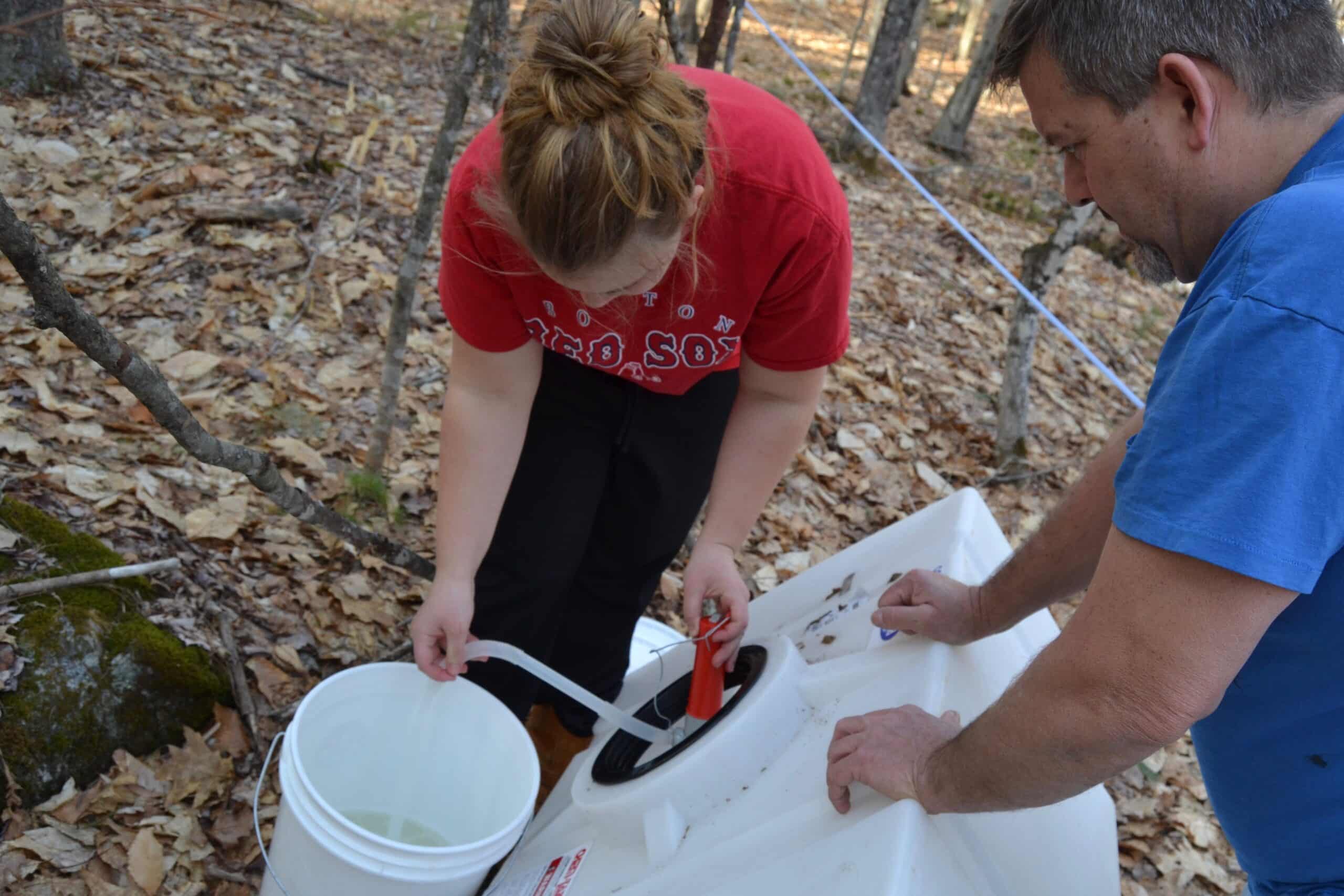
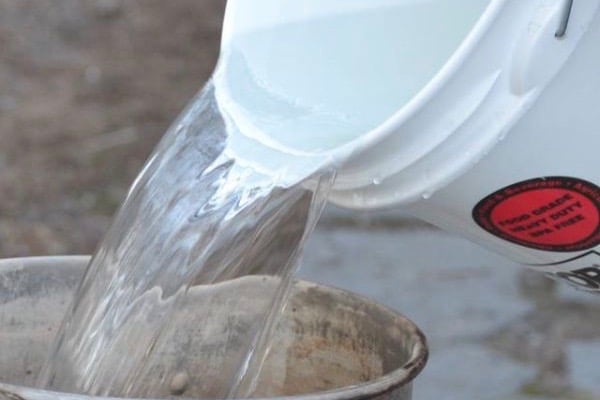
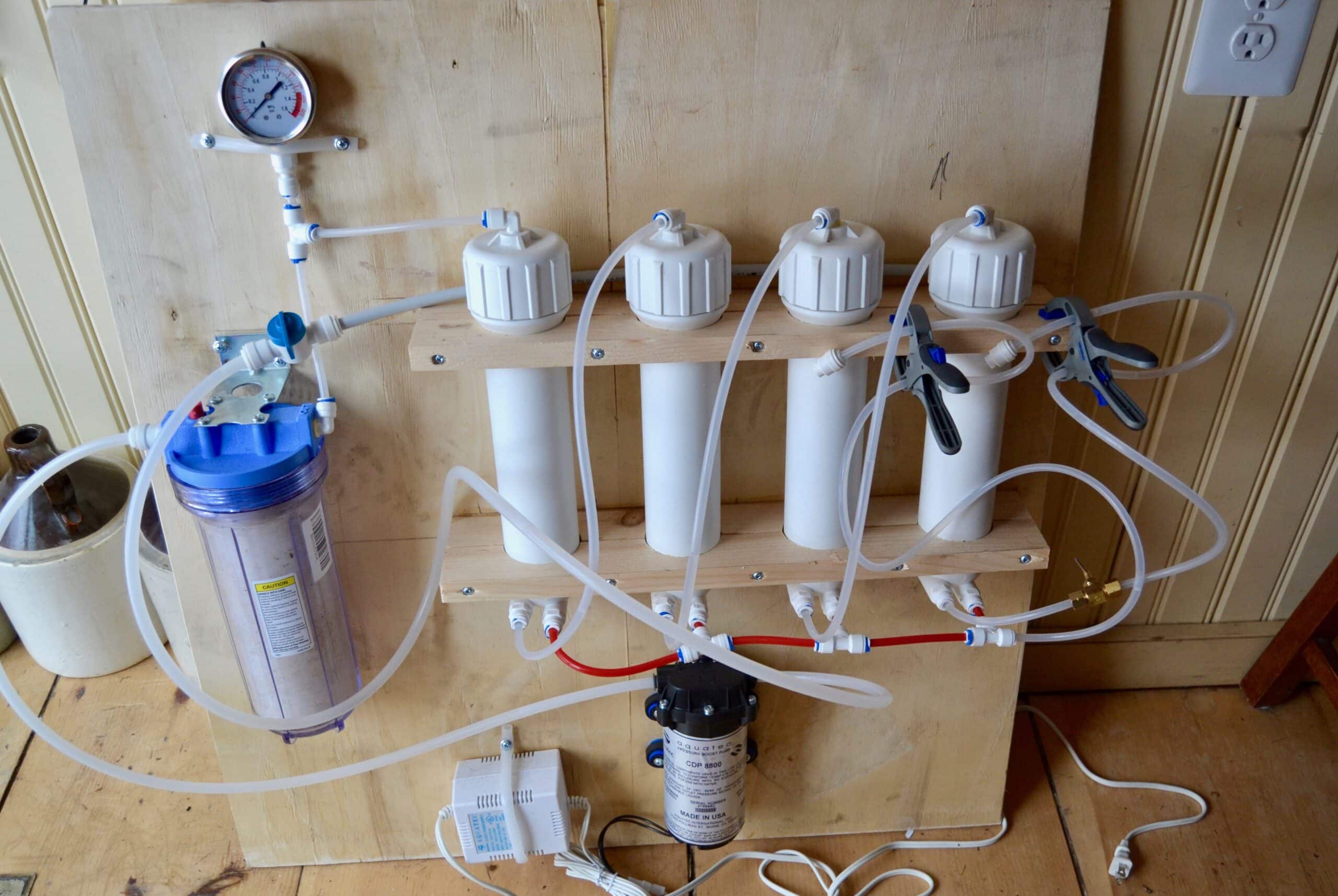
• • Step 2: filter the sap • •
Next step (after pouring the sap through our reusable cone filter) is to run the sap through the RO filter. Basically, the RO is a series of filters that are pulling out all the “impurities”– which get directed into one bucket–and leaving only “pure water,” called “permeate” in the sap world. It’s almost always a 50/50 ratio, leaving us with half of the sap that we started with (and some pretty darn yummy filtered water), which is great because that cuts the time, and expense of the next step, in half.
The Sugarmakers’ Companion goes into pretty great depth about RO filters and if they’re a good thing. To boil it all down for you (no pun intended, okay maybe a little bit), tests have shown no change in nutritional quality or taste of the end product if the sap was or was not run through an RO filter. Basically, it’s filtering out all the good stuff, which you than can boil into sap in half the amount of time.
Wanna know how we save hundreds every year, in our maple syrup backyard operation? Go here for the full scoop.
• • Step 3: boil the sap outside • •
After the sap has run through the RO filter, we turn on the propane tank and fill our giant pot 3/4 full of the filtered sap. We never fill it more than that because sap has a tendency to boil up and over a pot edge very easily. If you wanna know why we don’t do the boiling inside, I explain that in this brief video.
We add more sap often, always keeping it at the 3/4-full mark or less. On the really productive days, when we gathered tons of sap, we can’t finish it all in one night. We’ll stop after a few hours of boiling and label the sap buckets “RO,” with tape on their lids, so we don’t mix them up the next day with straight sap that we collect. (Although, honestly, we’d have to be half asleep to mix them up. The filtered sap is golden tinted; straight sap looks like water.)
• • Step 4: boil the sap inside • •
When the outside pan has boiled down to only a few inches of sap, we bring it inside.
By the way, when it’s getting close to that point, never leave it unattended. It just takes a few minutes of your eyes off of it for it to boil down to burnt-on, burnt-up mess. I learned the hard way, the gotta-go-out-and-buy-a-new-$90-pan-tomorrow way. I explain in this short video. (Click the link or scroll to the bottom of this post for the video.)
Once you take it off the outside heat source, you’ll need to very carefully filter the boiled-down sap to get out impurities that blew in while you boiled. If you don’t get these out, your syrup will be very bitter tasting. We started off, last year, using coffee filters to do this step, but it was pretty much pointless, because coffee filters leave lots of sediment. Now we use a reusable, washable cone filter we found very reasonably on Amazon and made a make-shift holder for it out of a heavy-duty hanger. But you can buy a filter stand, if you’d like to look like you know what you’re doing. (Plus, admittedly, our set up does sometimes fall into the bucket.)
In this video I explain a filtering tip that has saved us lots of heartache:
Our maple syrup operation manager designed and installed a fancy steam tunnel to direct steam out our downdraft vent. (aka my husband riggs up a temporary set up with chimney pipe pieces he had sitting in the basement to keep sticky steam off our kitchen walls.)
A few weeks ago, when we were boiling on the kitchen stove, we weren’t watching every. single. second. That was a messy mistake. When sap boils over, it does so very rapidly and with great enthusiasm.
Sadly, we didn’t learn the first time. After 20 minutes of sticky clean up, we put the pot back on the heat and–I’m embarrassed to admit it–walked away for a minute. But, I can proudly say we did NOT make that same mistake a third time that night.
Because we packed it up. In utter discouragement. And went to bed.
But when all is going well, we get the filtered sap up to a boil of exactly 219 degrees. This perfect temperature does depend on your altitude; you need the sap boiling at exactly 7.1 degrees above the boiling point of water. At that temperature a magic thing happens. Sap becomes syrup. Just like that. The plain-old-step-sister-like tree sap becomes the cinderella of syrup. Except it does take a lot more than just waving a magic wand.
Ideally, at 219 degrees you should scoop some syrup into a hydrometer test cup and measure the syrup’s sugar content (called the “brix”) with a hydrometer. Your sugar content should be at 66% or higher. If your syrup is under that perfect measurement, you would let it boil another minute or two and try again.
But we haven’t made this investment yet. We simply take it off when it reaches 219 degrees.
UPDATE: We got a hydrometer the following year but hated that it was so fragile. We accidentally broke it and replaced it the following year. Then we realized we wanted to measure the sugar content of our sap. We got this refractometer and have LOVED using it for years now. This article explains more about all your options. And this video shows you how to use a refractometer:
After one more pass though the reusable cone filter, it’s finally time to bottle our liquid gold.
• • Step 5: bottle the syrup • •
We use a canning funnel to pour the syrup into pint jars (leaving about an inch of head space). We boil canning lids and (using a magnetic canning lid lifter) screw them on immediately after pouring the syrup in. Then we invert the jars, to make it extra easy for the lids to seal, and cover the jars with towels, so they hold their heat until they seal. With the fancy syrup jars I recently purchased (I mention WHY in this post), there’s no need for boiling lids, we just screw them on as soon as we fill the jars; they’re self-sealing. The plastic lids seal from the heat of the syrup.
We have to boil the sap to different temperatures and follow different steps if we’re making maple sugar or maple cream.
Grab a copy of my book, Sweet Maple, or my course, Making Maple Sugar, if you want to know every detail about all things maple. Remember to snag the $75 worth of bonuses that come with Sweet Maple (see the list of bonuses here) & take advantage of the $53 worth of special bonuses that come with my maple sugar course as well. (See that list here.)
If you’d like to enjoy more maple deliciousness.
If you’d like to sample some amazing maple cotton candy, some on-the-go packets of 100% maple syrup, or maple sugar and maple cream, my friend Tim runs an amazing family-owned sugarhouse. It’s where I send everyone who asks.
If you’re looking for the best 100% all-natural maple syrup at the best prices you will love anything you order from my friend Tim, via his family-run sugarhouse right here. But you will especially love to hear that his XXL size maple syrup is one gallon of deliciousness at the best price I’ve seen anywhere. How sweet is THAT?
If you love Tim’s syrup as much as I do, you’ll want to reorder. Stop back here for any link you find for his deliciousness… or just click the image below.–>
Or, to make it super easy for you, I link to Tim’s deliciousness right on my home page, just scroll right to the bottom right corner whenever you need to order some more maple amazingness.
Tim and I would love it if you order through any link here my site, so we know that I sent you.
Be sure to follow along so you don’t miss one spoonful of potential deliciousness. Plus, as soon as you follow by going to this link or scrolling to the box at the bottom of this post and typing in your email address, you’ll have instant access to my subscriber library.
I’m continually adding new helpful, inspirational, or potentially delicious printable ebooks.
One resource you can snag there right now is an ebook about how to make your own homemade electrolyte-filled maple drink and why you should. Who can resist an all-natural gatorade that tastes like maple!
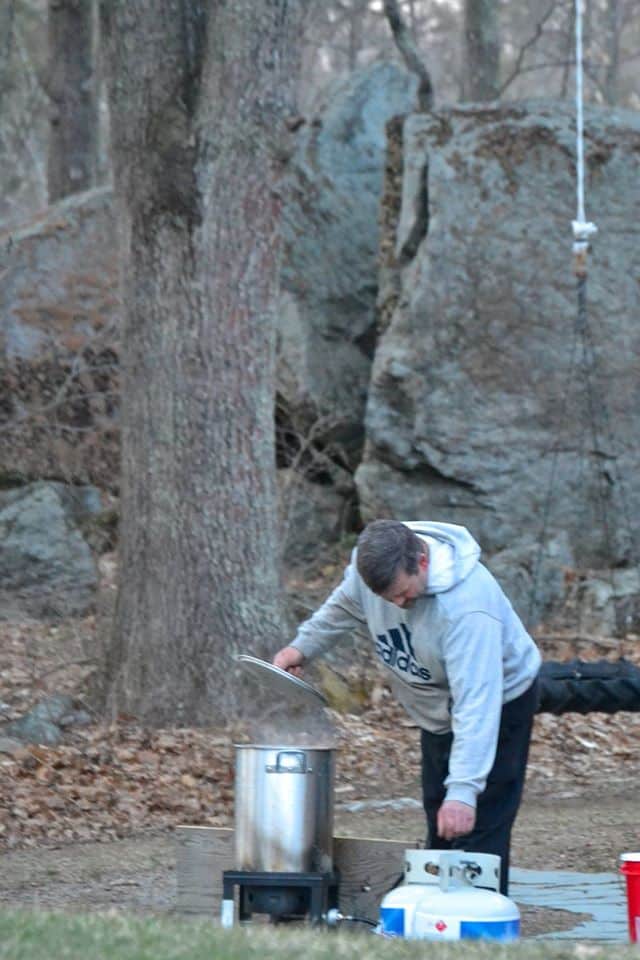

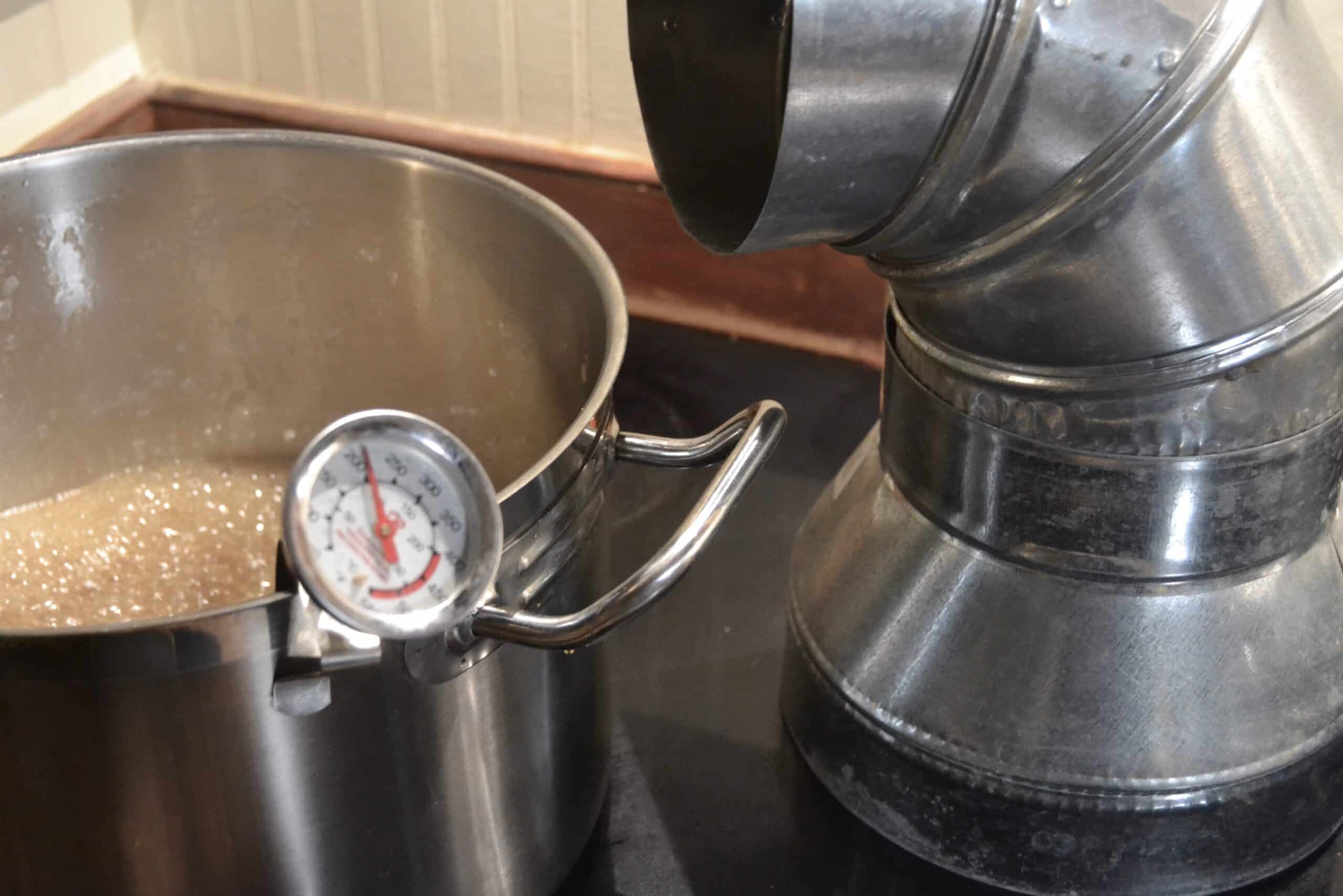
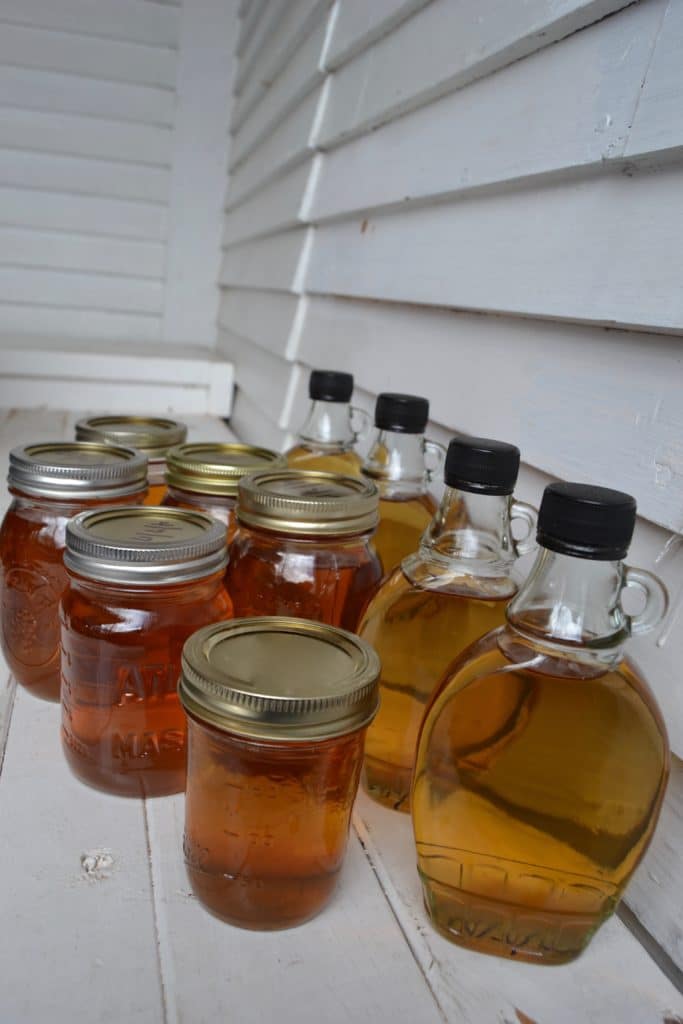
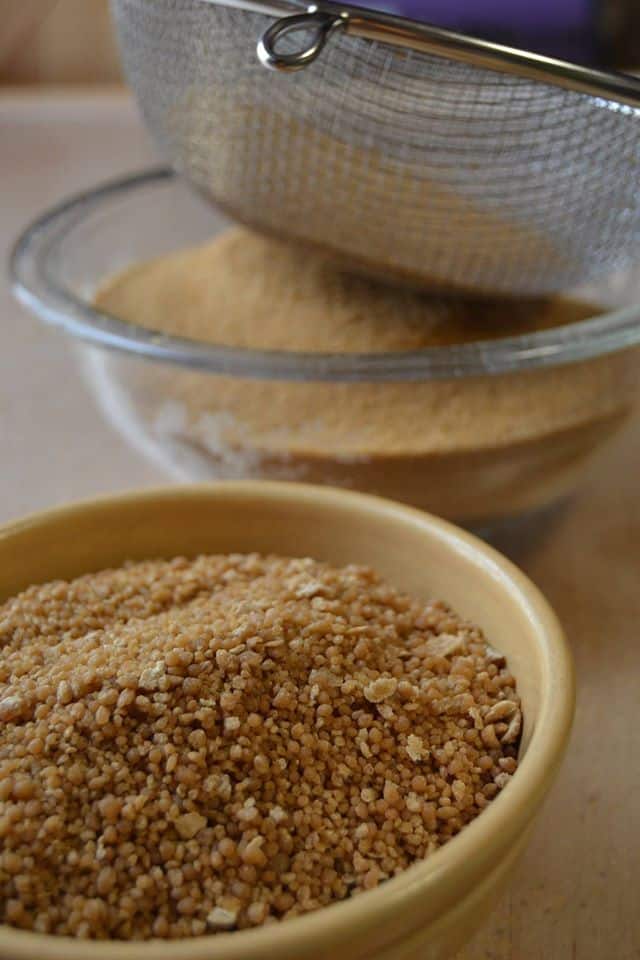
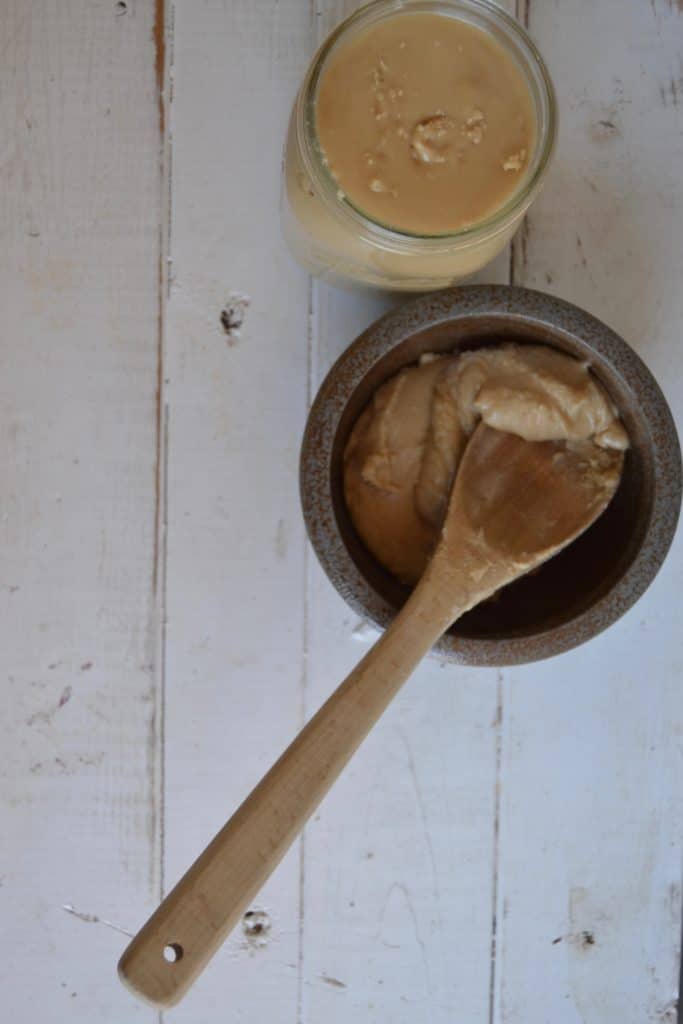

If you liked this article, you’ll enjoy these as well:
Making Lilac Syrup in our Farmhouse Kitchen.
Check out this list I’ve put together, after many years of research, of 31 trees that can be used for sugarmaking.
Making Maple Kombucha, possibly the most deliciously good thing you can do for you gut-health.
How to make Maple Ice Cream. (YUM!)
How to save lots of money by building your own RO Filter for backyard sugarmakers.
For his invisible attributes, namely, his eternal power and divine nature, have been clearly perceived, ever since the creation of the world, in the things that have been made. Romans 1:20
That video I promised you, about why you should never take your eyes off of boiling sap.–>
PIN this for later! Just click this image.–>
Please follow along!
Please take a second to follow along here on SoulyRested to catch up on a few of my memorable mishaps, discover fascinating things about my centuries-old farmhouse, glean a little parenting/homeschooling insight fr om this momma who’s been failing at the effort for almost 2 decades, or enjoy the inside scoop on the secrets other legit homesteaders might not tell you.
om this momma who’s been failing at the effort for almost 2 decades, or enjoy the inside scoop on the secrets other legit homesteaders might not tell you.
Find out why SoulyRested was considered to be one of the Top 20 Must-Read Homesteading Blogs of 2018 and then one of the Top Homesteading Blogs of 2019 as well.
I hope my focus always encourages you, because simple joys require hard work. Let’s face it, we all need all the encouragement we can get!
As soon as you subscribe (in the box at the end of this post), you can jump right in to my Resource Library.
v v v v v v v v v v v v v v v v
If you’d like any of these resources, just scroll to the end of this page and sign up!
All of these resources, and lots more, are included in my Subscriber Resource Library:
A yummy (piece-of-cake easy!) recipe for Maple Cream Icing.
A printable list of 22 trees that are popular for tapping across the U.S. (And even around the world!)
Links to helpful resource pages to aid you as you consider tapping your trees.
An impressive list of ingredients in all-natural maple sweeteners. (Compared to refined sugar, there’s no comparison.)
A recipe for Maple Sap Switchel (This amazing homemade electrolyte drink is like Gatorade but so much better!)
And two FREE maple-infused eBooks, Maple Goodness and A Sweet Taste.
Type your email below, and you’ll soon be enjoying printouts from my Resource Library, resources that you can access and download today.
v v v v v v v v v v v
I’d love to connect!
To find me in some other neck of the woods, just click any (or every!) icon below:


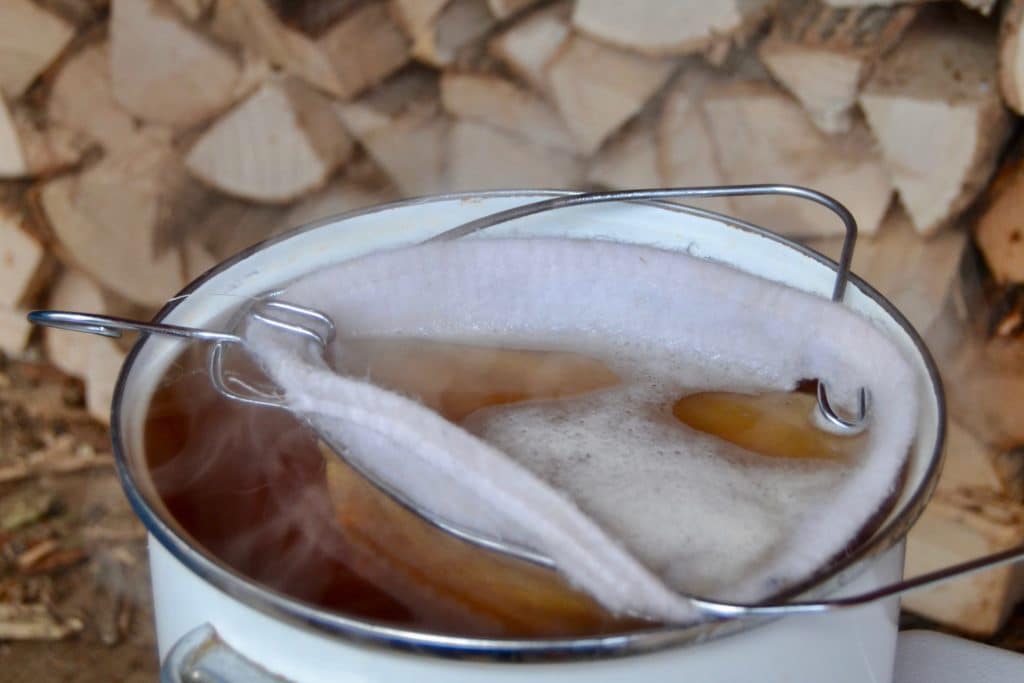
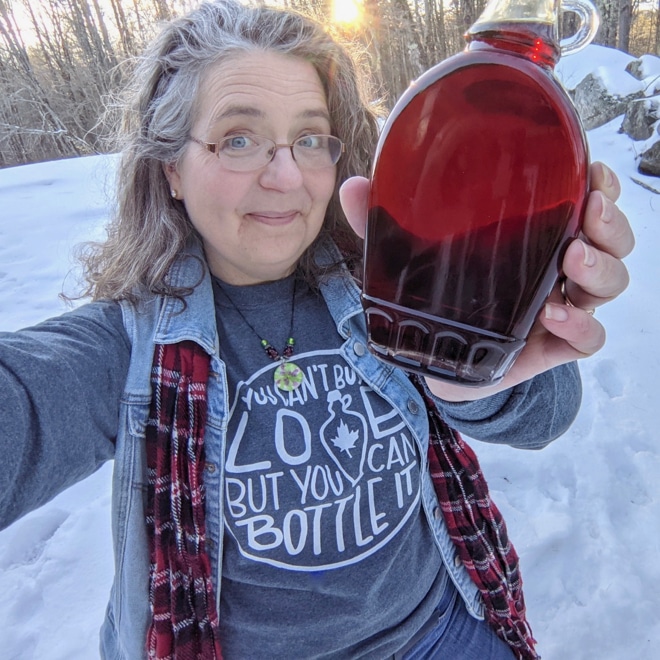
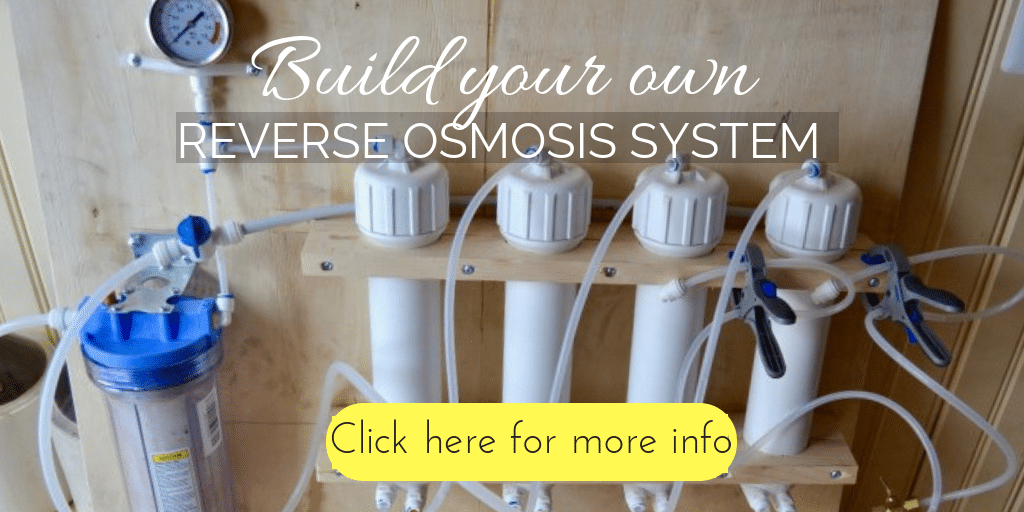
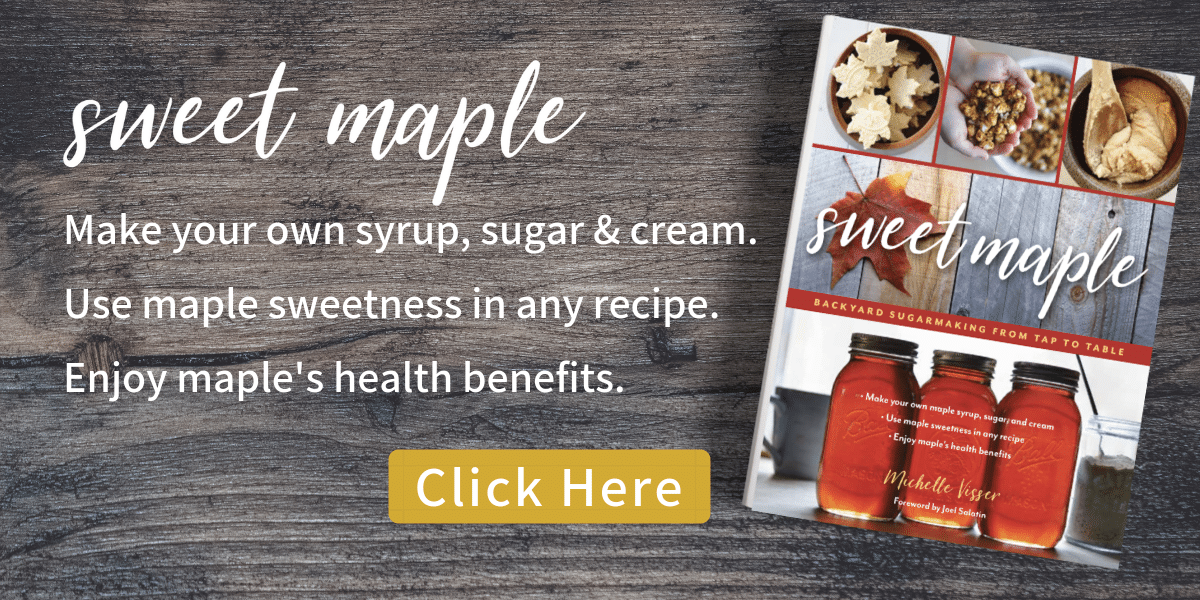
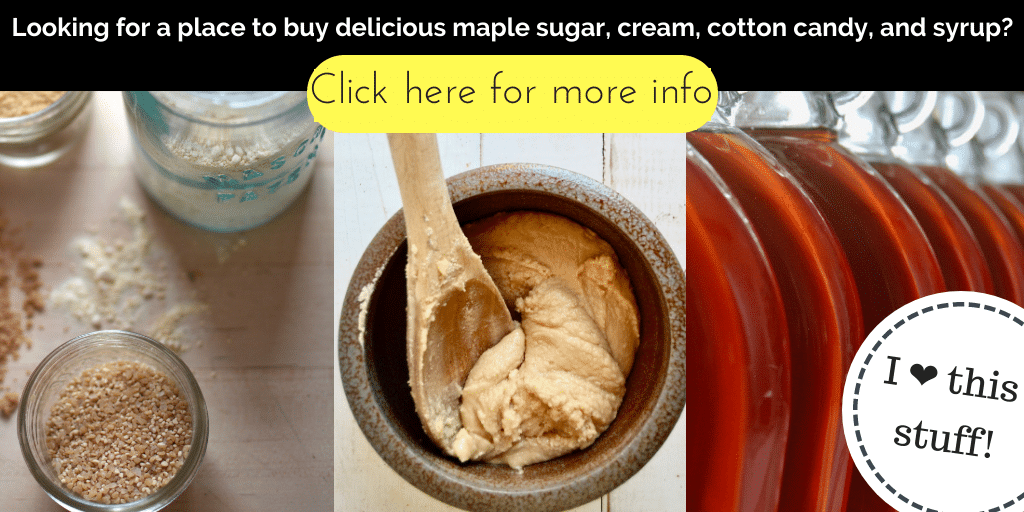

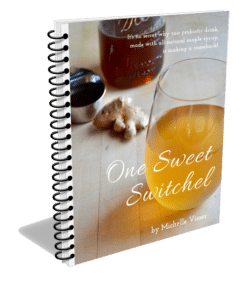
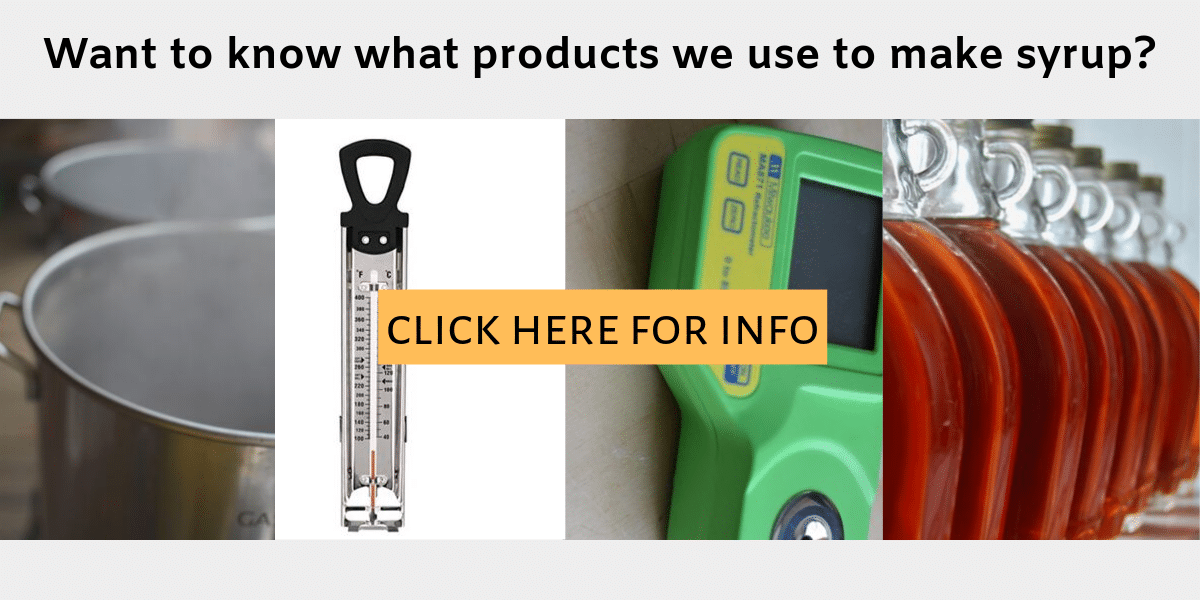
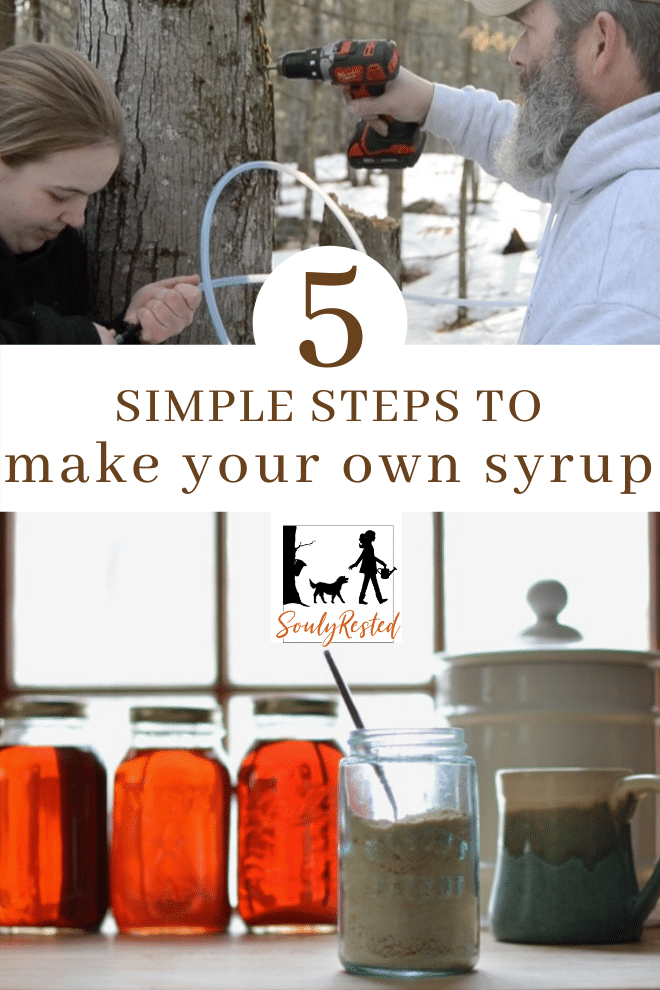





Thanks for attending the #WednesdayAIMLinkParty, I shared your post.
Thanks for having me at the party. 🙂
It looks a little complicated but obviously worth the effort. Thanks for sharing with us at #overthemoon. I’ve pinned and shared. Have a great day!
I’ve pinned this for later! We’re moving to our homestead this summer, so I’ll definitely be keeping an eye out for potential sap trees for next Spring. Thanks for sharing with the Homestead Blog Hop! (And go Red Sox!)
Looking forward to following this series.
Thanks
Paul
Interesting